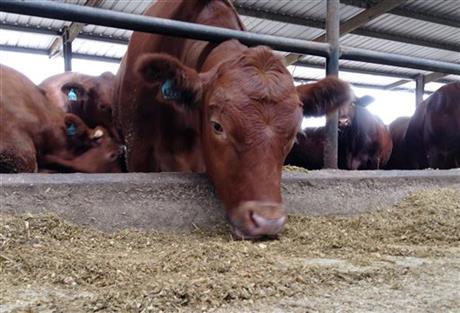
By MARY CLARE JALONICK
The government issues dietary guidelines every five years to encourage Americans to eat healthier. This year’s version may look at what is healthy for the environment, too.
A new focus on the environment would mean asking people to choose more fruits, vegetables, nuts, whole grains and other plant-based foods — possibly at the expense of meat.
The beef and agriculture industries are crying foul, saying an environmental agenda has no place in what has always been a practical blueprint for a healthy lifestyle.
An advisory panel to the Agriculture and Health and Human Services Departments has been discussing the idea of sustainability in public meetings, indicating that its recommendations, expected this month, may address the environment. The two departments will take those recommendations into account as they craft the final dietary guidelines, expected by the end of the year.
The guidelines are the basis for USDA’s “My Plate” icon that replaced the well-known food pyramid in 2010 and is designed to help Americans with healthy eating. The guidelines will also be integrated into school lunch meal patterns and other federal eating programs.
A draft recommendation circulated by the advisory committee in December said a sustainable diet helps ensure food access for both the current population and future generations. A dietary pattern higher in plant-based foods and lower in animal-based foods is “more health promoting and is associated with lesser environmental impact than is the current average U.S. diet,” the draft said.
That appears to take at least partial aim at the beef industry. A study by the journal Proceedings of the National Academy of Sciences last year said raising beef for the American dinner table is more harmful to the environment than other meat industries such as pork and chicken.
The study said that compared with other popular animal proteins, beef produces more heat-trapping gases per calorie, puts out more water-polluting nitrogen, takes more water for irrigation and uses more land.
As the advisory committee has discussed the idea, doctors and academics on the panel have framed sustainability in terms of conserving food resources and also what are the healthiest foods. There is “compatibility and overlap” between what’s good for health and good for the environment, the panel has said.
The meat industry has fought for years to ensure that the dietary guidelines do not call for eating less meat. The guidelines now recommend eating lean meats instead of reducing meat altogether, advice that the current advisory committee has debated. A draft discussed at the panel’s Dec. 15 meeting says a healthy dietary pattern includes fewer “red and processed meats” than are currently consumed.
After that meeting, the National Cattlemen’s Beef Association sent out a statement by doctor and cattle producer Richard Thorpe calling the committee biased and the draft meat recommendations absurd. He said lean beef has a role in healthy diets.
The American Meat Institute issued comments calling any attempt to take lean meat out of a healthy dietary pattern “stunning” and “arbitrary.”
Objections are coming from Congress, too.
A massive year-end spending bill enacted last month noted the advisory committee’s interest in the environment and directed Agriculture Secretary Tom Vilsack “to only include nutrition and dietary information, not extraneous factors” in final guidelines. Congress often uses such non-binding directions to put a department on notice that lawmakers will push back if the executive branch moves forward.
Environmentalists are pushing the committee and the government to go the route being considered.
“We need to make sure our diets are in alignment with our natural resources and the need to reduce climate change,” said Kari Hamerschlag of the advocacy group Friends of the Earth.
Michael Jacobson of the Center for Science in the Public Interest said the idea of broader guidelines isn’t unprecedented. They have already been shaped to address physical activity and food safety, he said.
“You don’t want to recommend a diet that is going to poison the planet,” he said.
___



